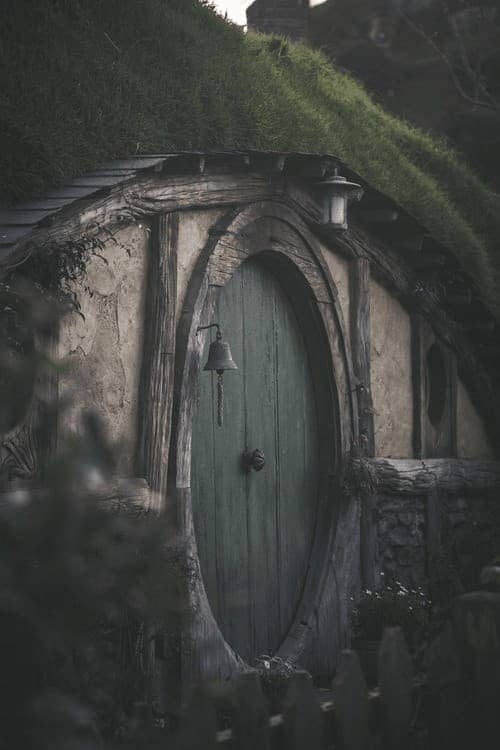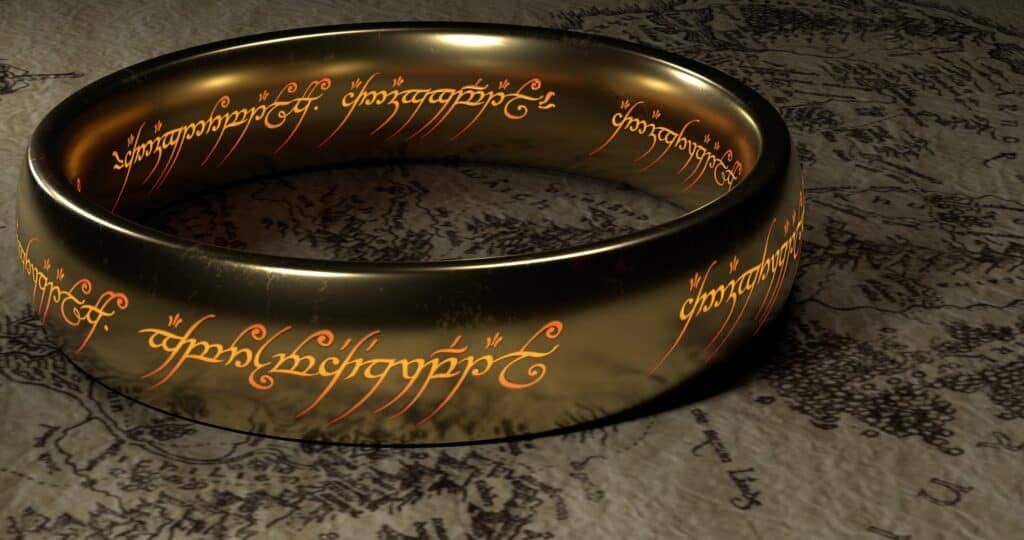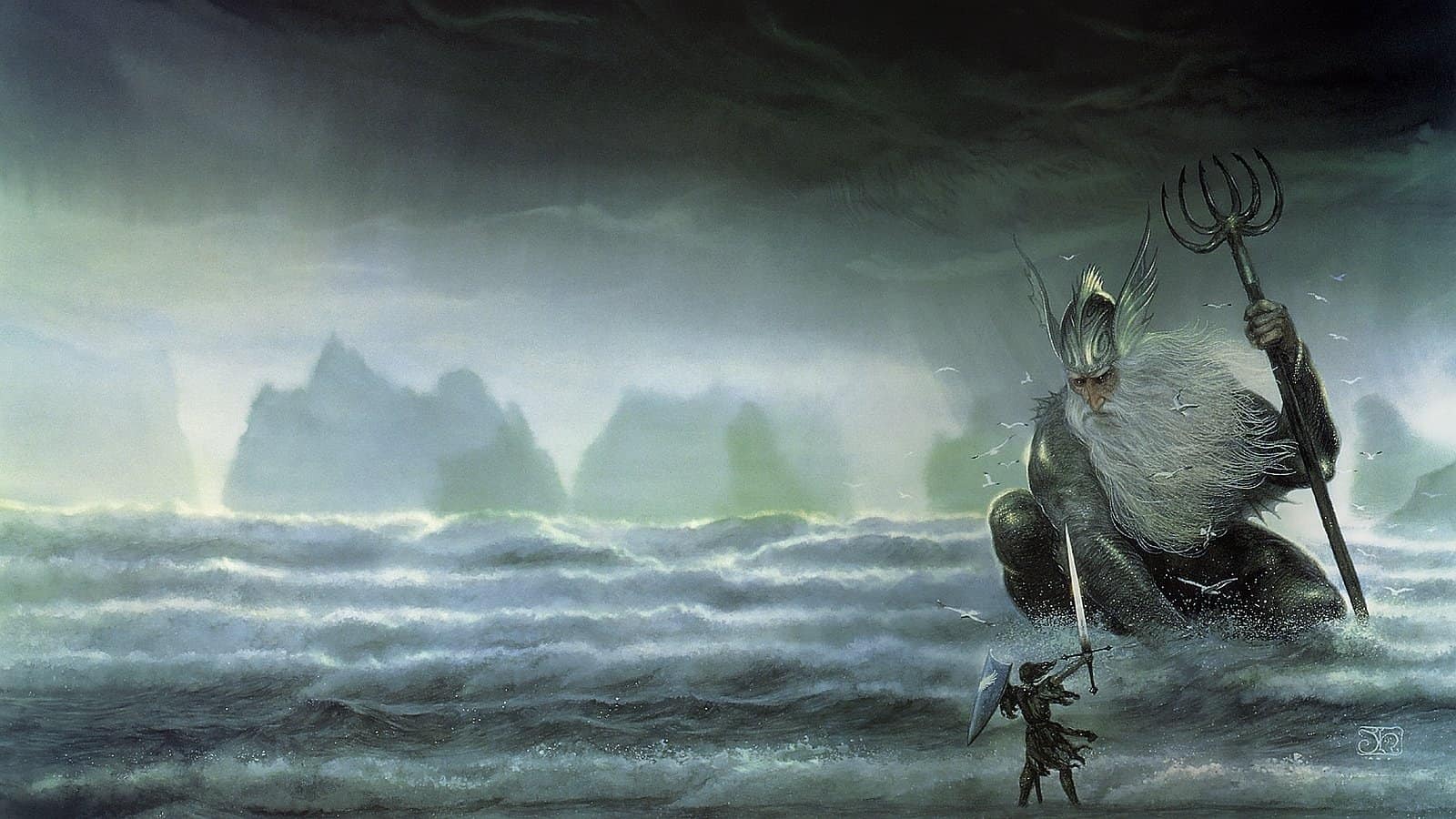Where does our mythology come from?
We’ve talked about norse mythology, greek gods, folklore, etc. And yet, we never really explained “why” and “how” humans created these stories. What’s the purpose of imagining a fierce God throwing thunders or a simple man holding a gigantic hammer?
Of course, if you ask the experts, they’ll give you dozens of explanations. From the anthropological perspective to psychology and the collective subconscious.
But these are all speculations. I believe that the answer is right in front of us. We don’t have to go back 1000s of years to read Homer or the poetic Edda to learn the motivations behind them!
All we have to do is to go there and back again.
Mythopoeia: The Art of Creating a Myth
If you haven’t been living under a rock, you already know one of the greatest mythopoiec authors of all time: J.R.R Tokien.
And if you haven’t read his books, I’m sure you’ve seen the movies!

The Lord of The Rings trilogy is considered a modern masterpiece and the Hobbit adaptation provided a fresh perspective to an old story.
Tolkien is a master word-builder and part of his success lies in his ability to create a complete universe where different stories can take place.
The moment you open “The Fellowship of the Ring”, you’re transferred to a new, functioning world that resembles ours but has different rules, languages, mythical beings, and Gods.
His world is so complete, people are studying it in university!
Yet, don’t you wonder where Tolkien got all of his ideas?
“The Silmairillion” and the Birth of a Arda
See, while most writers use language, lore, and myths to tell a story, Tolkien created a world he could place these things in.
He wanted to give context and meaning to the language of Quenya and explain his theological perspective about our reality.
“The Silmarillion” is the foundation of his vision. It contains a mythological system of Gods, lesser deities, legends, prophecies, an impending apocalypse, etc.
(Sounds familliar?)
The book consists of 5 parts, each building on the previous one.
- Ainulindalë
- Valaquenta
- Quenta Silmarillion
- Akallabêth
- Of the Rings of Power and the Third Age
We get to look behind the curtain of Middle-Earth and witness the creation of a new “cosmos”.
Enjoying this post? Answer the Call
From the dream of Illuvatar to the music of Ainur and the passing of time throughout the 3 Ages of Ea.
Part of the reason Tolkien decided to create this “new” mythology was to explain the mythological origins of the British. Being a scholar and an academic, he was keen on research and incorporated bits and pieces of traditional, folklore tales.
As he progressed, he began using different elements of myths and languages from different regions of the world.
You’ll notice an underlying narrative that exists in almost all religious practices.
1. Ainulindalë, and the Genesis of the Universe
Tolkien chooses dreams and music to facilitate the creation of the world. He places an architect, the all-powerful Eru or Illuvatar, at the centre. He dreams and composes music that creates life!
Before anything else, he fathers the Ainur, eternal spirits. He then shows them a musical theme and invites them to join him.
Not everyone does and some follow Melkor, the most powerful of the Ainur, creating a different theme. It’s an act of rebellion.
But it is what’s necessary to shape a new world.

Illuvatar, instead of striking down the “fallen angel”, responds with a child-like attitude and creates another theme. This dualistic order-chaor sequence is what eventually leads to the creation of the “Earth”, Arda.
The Ainur were invited to be part of this world and take physical shape in it. Those who accepted became the Valars, what we’d call “Gods”.
But Melkor wanted everything for himself. Every time the Valars tried to shape and prepare the world for the Elves and Humans, he’d destroy everything.
This is how everything started taking form, repeating the ever present “order through chaos” principle.
2. Valequenta, The Mighty Valar
We’ve already mentioned that Tolkien used many different religions to form his own world. That’s especially true for the Valar.
Similar to Olympian Gods dwelling on Mountain Olympus, they live in Valinor seperated from the mortals but still present in the world.
But what’s interesting about them is that they’re also engrained in the physical world, since each one sang and created different parts of it.
The enemy of the Valar is Melkor. He remains a Valar, a primordial entity, and his evil doings and corruption can be witnessed as much as the beauty of the rest of the Gods.
Corruption in this world takes physical form. The crystal clear river running through the land is a manifestation of the beauty and innate goodness of a Valar. When this river dries out, it is a work of Melkor.
He’s inside the earth, in the waters, and the sky.
Borrowing from Christian theology, Tolkien creates a parallel character to that of Lucifer. Melkor was once the fairest and most powerful Ainur, but he fell from the grace of Illuvatar and rebelled against him.
That made him evil in spirit and in sight.
Melkor, eventually named Morgoth, managed to corrupt many of the Maiars (lesser deities). The most well-known being Sauron and the Balrogs.
3. Quenta Silmarillion
This is the biggest part of the book. It recounts the events of the First Age, the awakening of the Elves, and the creation of the Silmarills.
Silmarills
Even though we rarely hear about the Silmarils in Lord of the Rings, some people consider them to be what will determine the fate of Tolkien’s universe.
They are the “Holy Grail” of Arda, in the literal sense. They represent light, as they were fashioned by Feanor (an immortal Elf) using the light emmited from the Two Trees of Valinor.
The Two Trees were used by the Valar to light the world but were destroyed by Melkor. Part of their light was infused into the three jewls, Silmarils.
From here on out, everyone was seeking them.
Personally, I’d call this the Age of Heroes. Like Hercules and Thor, there’s Feanor and Hurin.
Our focus shifts from the divine creation and towards the dealings between “Gods” (Valar) and humans.
Like the pre-christian, pagan religions, Gods have “pathos” and mortal desires. And they like to meddle in the affairs of men and elves.
There are many tales of bravery, self-destruction, betrayal, and corruption. From the destruction of Beleriand to the corruption of the elves and the story of how some of them became “orcs”.
This is perhaps the most intriguing part of the book so I suggest you read these stories from the original source!
4. Akallabêth
“The Silmarillion” was never finished, so there are missing pieces in Tolkien’s legendarium. “Akallabêth”, the Donwfall of Numenor, is a short chapter but perhaps the most representative of the author’s world-view.
It is the story of the corruption of the Men of Numenor, the most loyal of men, by Sauron.
Even though they were blessed by long life and vigor, they had begun to be jealous of the immortality the Elves and the Valars posessed. As they became more obssessed about achieving a long life, their lifespan shortened.
(Tolkien always wanted to represnt hubris and arrogance in tangible manifestations and consequences. In this cases, he borrows a lesson from the classical mythological story of Icarus)
Sauron took advantage of that innate desire and steered the race of men to war against Valinor, the land of the Valar, and immortality for themselves.
Illuvatar interfered and sent a great wave, submerging the island of Numenor into the sea.
5. Of the Rings of Power and the Third Age

The final chapter is about the Rings of Power and the events leading to the War of the Ring.
I think most people are already familliar with this chapter so I’m going to summarized it with a poem:
“Three Rings for the Elven-kings under the sky,
Seven for the Dwarf-lords in their halls of stone,
Nine for Mortal Men doomed to die,
One for the Dark Lord on his dark throne
In the Land of Mordor where the Shadows lie.
One Ring to rule them all, One Ring to find them,
One Ring to bring them all, and in the darkness bind them,
In the Land of Mordor where the Shadows lie”
You could infer the whole saga of the One Ring from this short passage alone. The creation of the 3 Elven Rings, Sauron gifting the rest of the Rings of Power to the Dwarves and Men, and his treachery when he created the most powerful Ring of all.
Note: The One Ring doesn’t give you supernatural powers, but access to the minds of those who posess the rest of the rings. Tolkien had a nuanced perspective about what it mean to have “power”
You’ll encounter many poems in Tolkien’s work. After-all, poems are the original medium of telling a mythological story (see Homer’s work and the poetic Edda).
The Lost Chapter: Dagor Dagorath
As I’ve mentioned, Tolkien’s mythology is incomplete. There are many missing pieces and contradicting narratives in his work.
The most important one is “Dagor Dagorath”. It was supposed to be at the end of “The Silmarillion”.
It showcases the influence of Nordic mythology and Christian theologoy. Ragnarok and Armageddon, respectively.
Dagor Dagorath is the Apocalypse.
“The Battle of all Battles” or the “Days of Doom” is a prophecy by one of the Valars responsbile for the Judgement of Spirits (similar to Hades), called Mandos.
There are a few hints mentioning this day throughout the rest of Tolkien’s work.
Is Tolkien’s Mythology Real
If you read books about mythology, you’ll find that they’re a collection of stories, oral traditions, and culture-specific legends that were shaped and refined by people who lived 1000s of eyars ago.
Tolkien borrows from these collections and forms his own interpratation, adding fantasy and detailed story telling.
We wouldn’t be able to tell what’s “fiction” and what’s mythology if he was alive during that time!
Here are some of the shared mythological and theological narratives present in Tolkien’s mythopoiea:
- Gandalf could be interpreted as Jesus. He sacrificed himself for them only to return and save them
- Gandalf also has Odinic qualities
- Melkor is Lucifer, the fallen Angel
- Dagor Dagorath and the Armageddon or Ragnarok
- The Island of Numenor resembles the myth of Atlantis
- The race of Elves and Celtic mythology
- The pagan polytheism and the Valars
- The One ring and the Ring of Nibelung (inspired by Germanic myths)
- The Hero’s Journey, present in every mythological story
How’s Tolkien’s Word Connected to Ours?
What’s interesting here is that Tolkien considered his stories part of our world, happening in the distant past. For reference, the 5th age ends in the 1950s, 6000 years after the beginning of the 4th Age, which began right after the events of the Lord of the Rings.
This implied connection made it possible to incorporate elements from our world.
For example, Isengard with its imperialistic tendencies and its use of explosives could represent modernity and its potential threat to our world.
(The Awakening of Trees and the flooding of Isengard was an allegory of what could happen if we deplete our natural resouces).
Of course, being a veteran of WW1, Tolkien used many war themes in his books, mainly highlighting the horrors and suffering war can cause.

Even though Tokien’s books were written close to a 100 years ago, they’re more revelant than ever.
Because his stories contain timeless lessons and archetypal narratives that permeate our collective unconscious.
“Not all those who wander are lost”
– Tolkien
P.S – If you’ve seen the movies, I highly recommend you pick up his books.
But in case you prefer audiobooks too, here are a couple of options on YouTube and Soundcloud:
